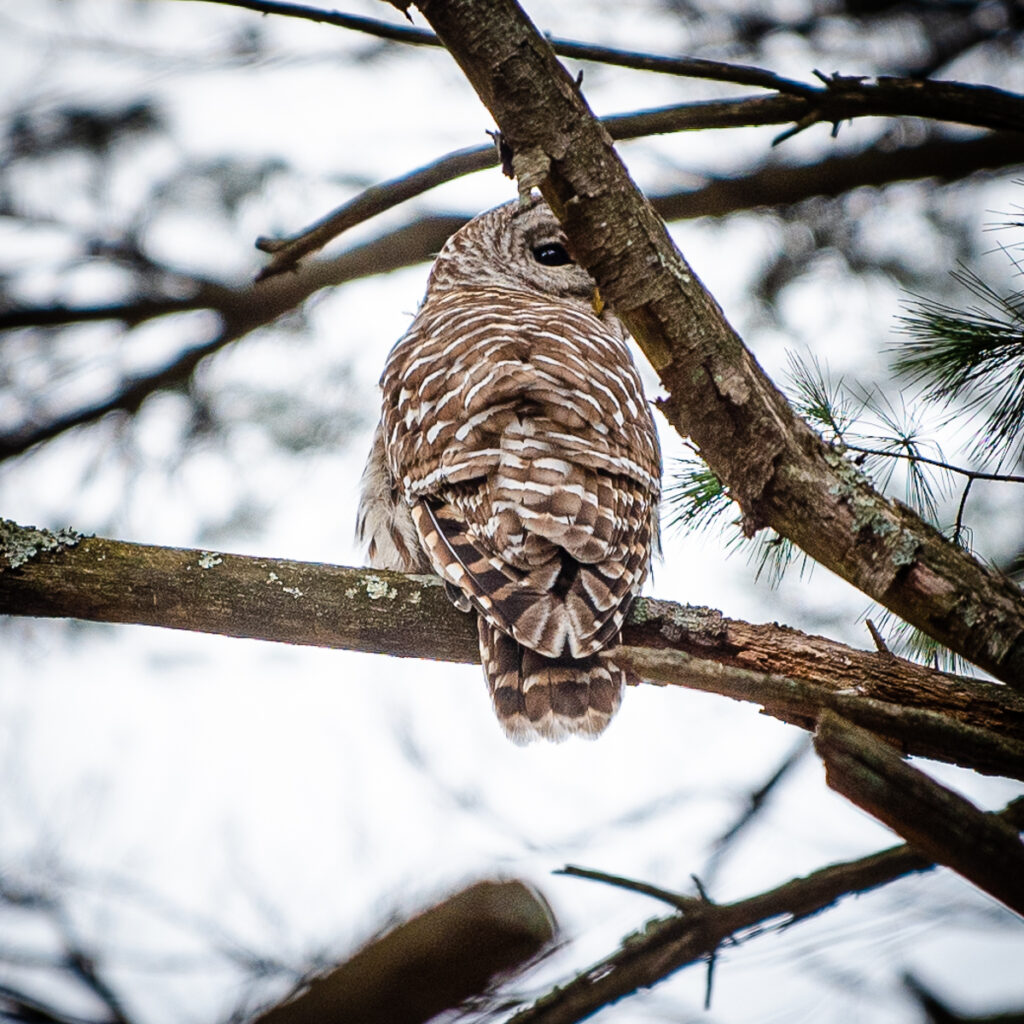
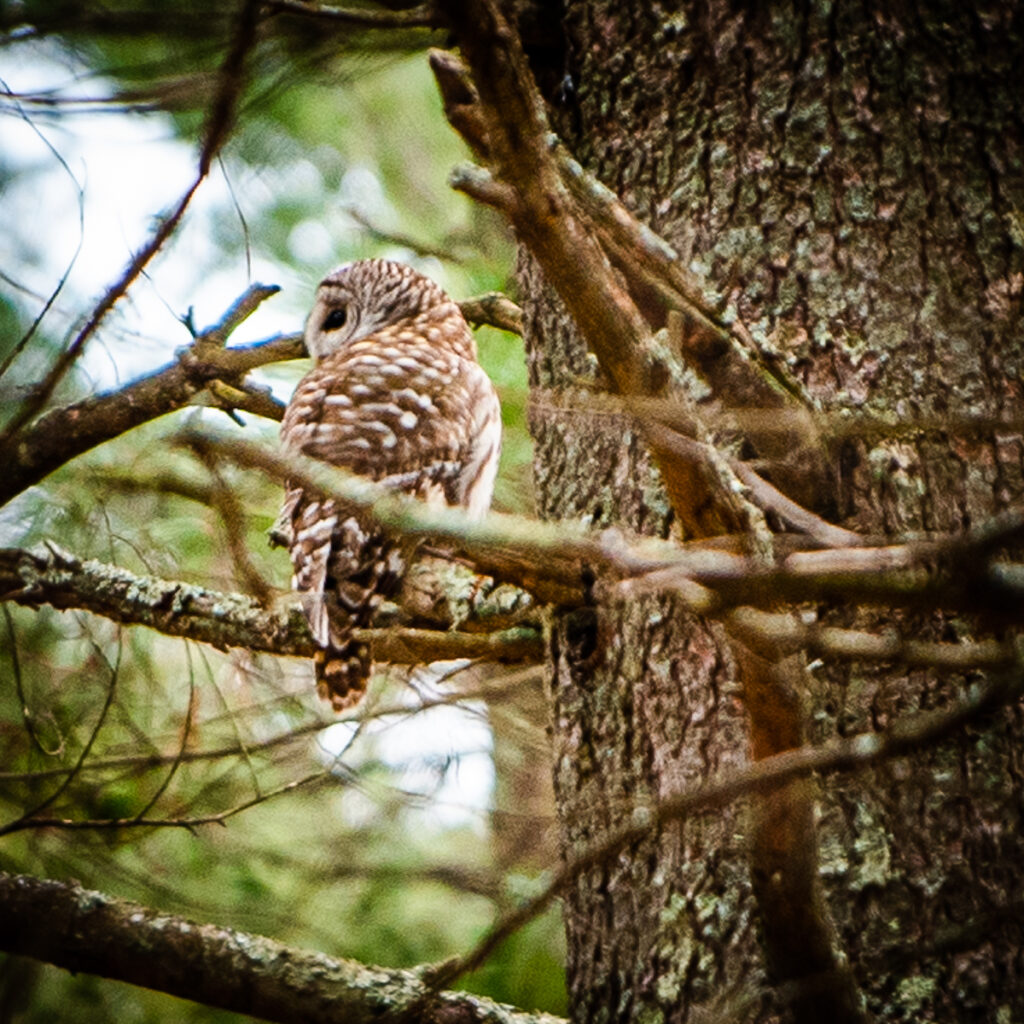
Out walking this afternoon and heard two barred owls hooting. Very distinctive call. So exciting! Thrilling to actually spot one of them during the day, and get a few shots.

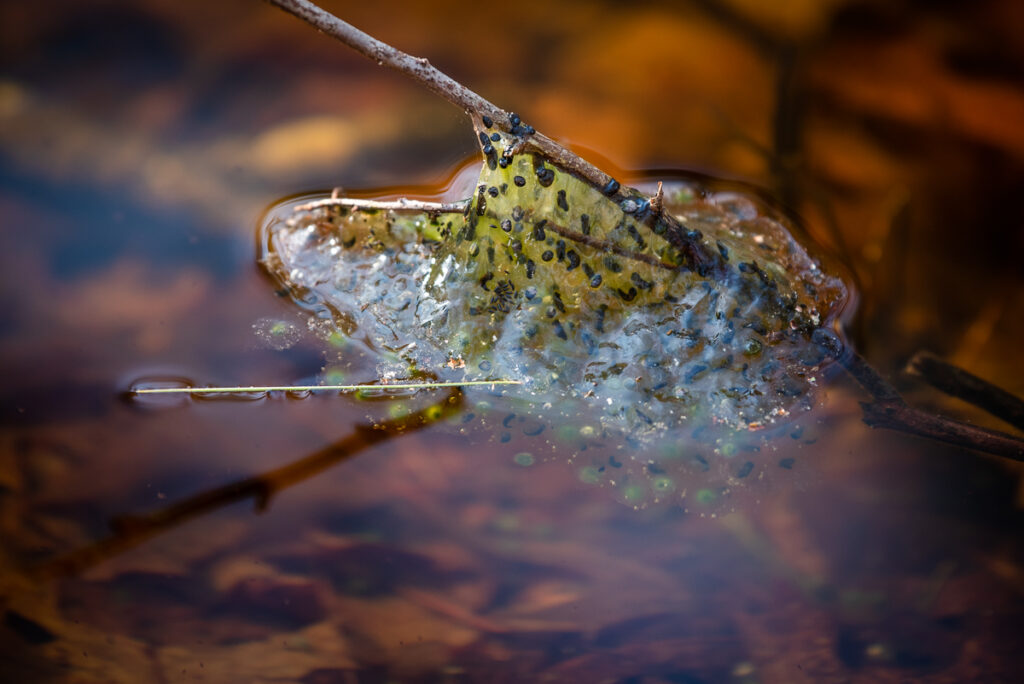
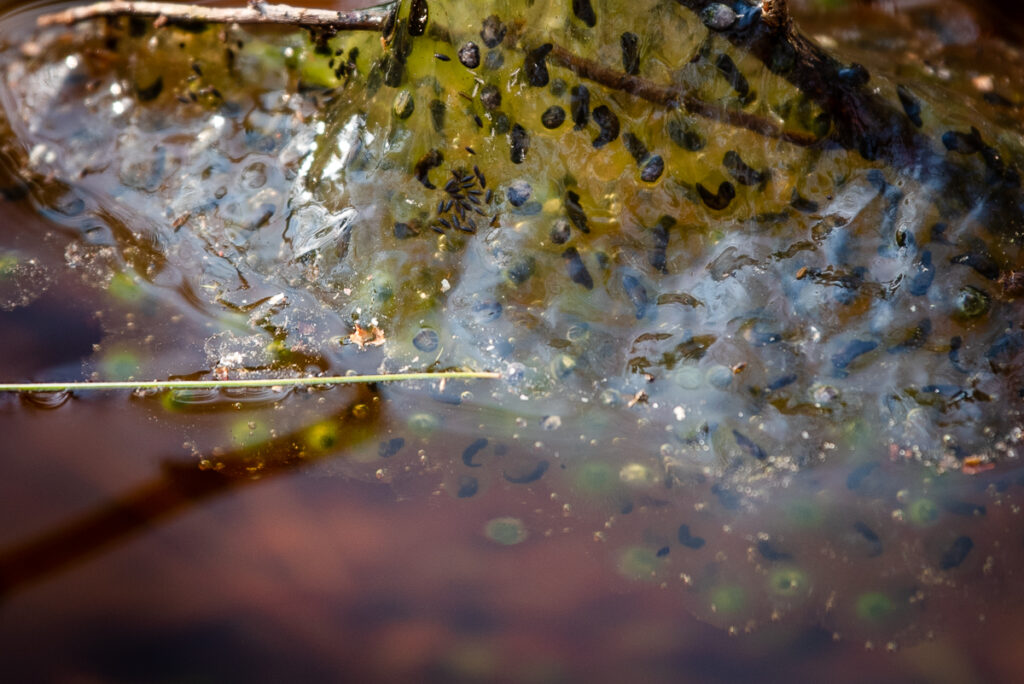
Even before the wildflowers get going, the peepers and wood frogs announce spring. (Wood frogs sound like ducks, or a bunch of loose banjo strings.) Usually I just listen… but this year I went on a vernal pool walk with a naturalist in Dover (organized by the Dover Open Space Committee).
I just loved having things pointed out to me that I have never noticed before, like gelatinous floating egg masses shimmering there on top of the water (eggs of wood frogs) and silvery translucent submerged masses (eggs of spotted salamanders).
So today I went looking in Needham for some egg clusters and I tell you, I did a lot of tromping with no luck, but did find this one and it’s pretty good. Before I would have thought it was just some algae/vegetation caught on that branch, but in the closeup you can see it’s a bunch of gelatinous ova containing black embryos, and some have turned into tiny tadpoles. (I’m pretty sure these are wood frog eggs, but let me know if not.) The egg mass is green with symbiotic algae; the babies stay with the egg mass feeding on the algae for a few days before dispersing into the pool.
Below is a phone shot I took on the vernal pools walk — wood frog eggs earlier in the cycle than my green shots above — newly laid, no one has hatched, and it hasn’t been colonized by algae. Vernal pools are temporary shallow pools that dry up after a couple of months– because of that, fish can’t live in them, and because of THAT, all kind of amphibians can lay their eggs in them without them being eaten by fish.
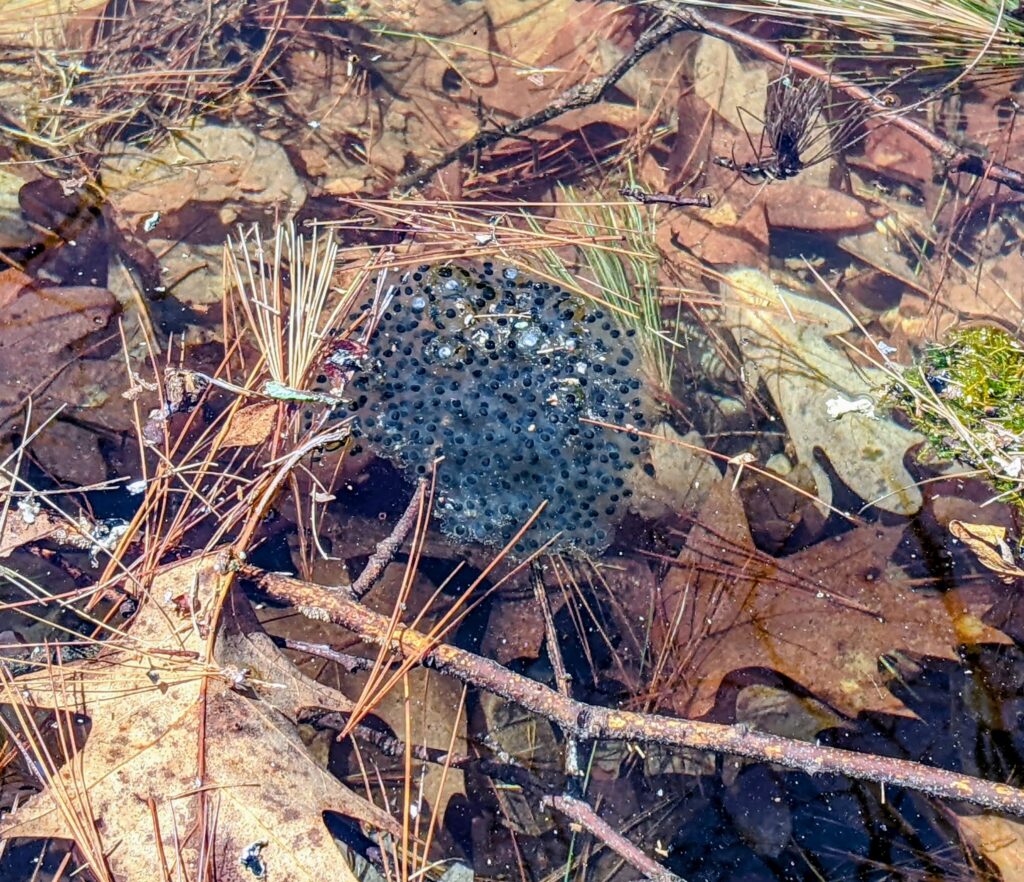
Wood frog (Rana sylvatica)
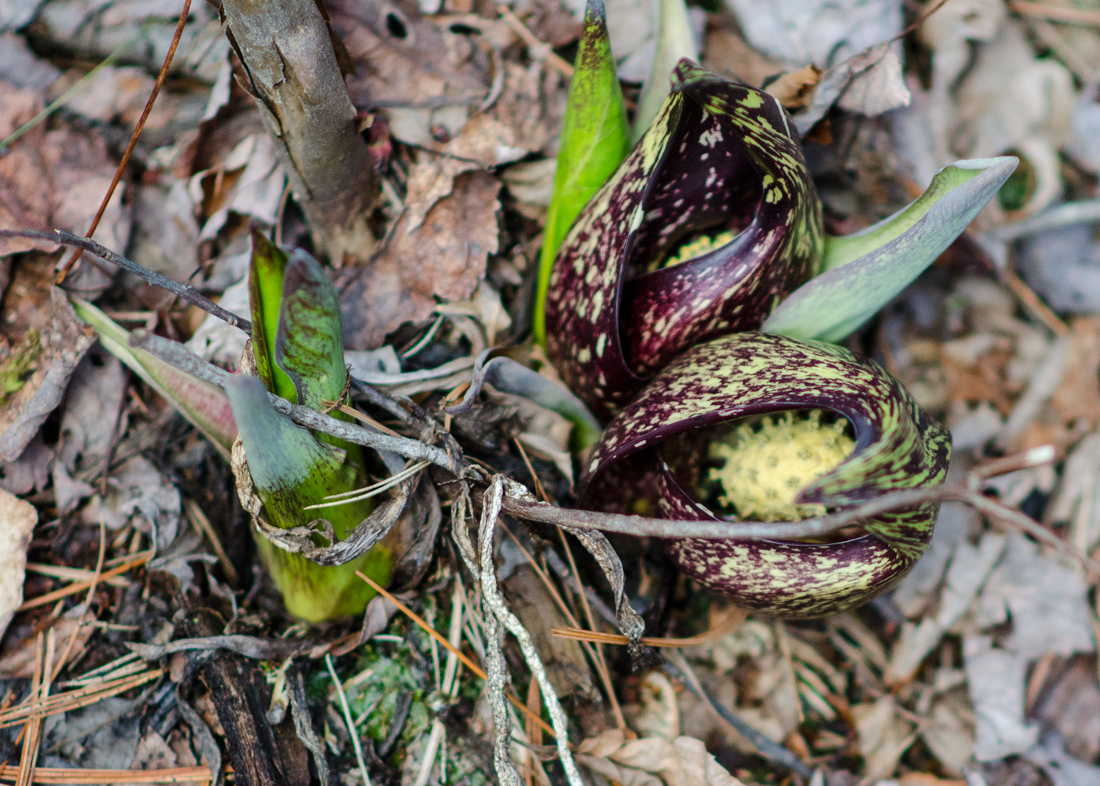 It was a mild winter. The skunk cabbage seemed to just survive the snow, with frost-blackened tips. In early April, creatures were waking up. Here, a skunk cabbage hood (spathe) showing the spadix inside (the flower head).
It was a mild winter. The skunk cabbage seemed to just survive the snow, with frost-blackened tips. In early April, creatures were waking up. Here, a skunk cabbage hood (spathe) showing the spadix inside (the flower head).
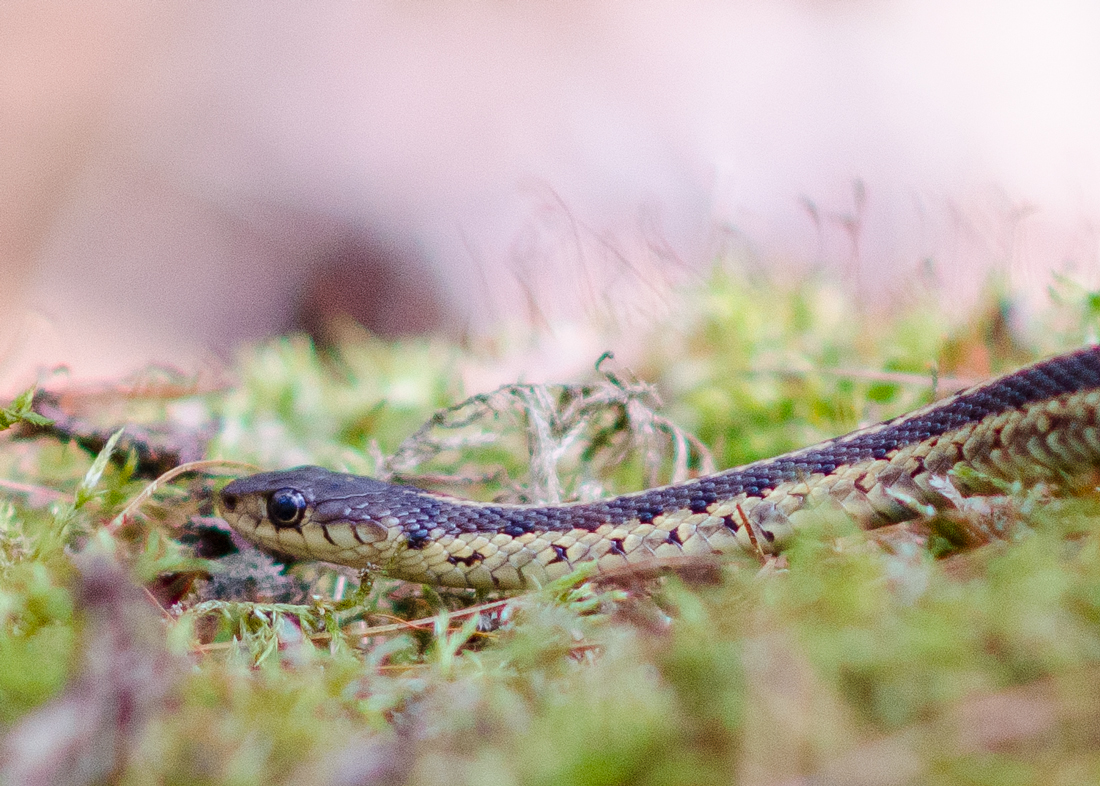 Also a garter snake adventuring, and best of all, there were a glorious few days of peepers. When I recorded this, they were so loud, and there were so many layers of sound, and individual voices. Wonderful. Not long after this, we had a spate of severe cold and snow and the peepers were noticeably quiet.
Also a garter snake adventuring, and best of all, there were a glorious few days of peepers. When I recorded this, they were so loud, and there were so many layers of sound, and individual voices. Wonderful. Not long after this, we had a spate of severe cold and snow and the peepers were noticeably quiet.
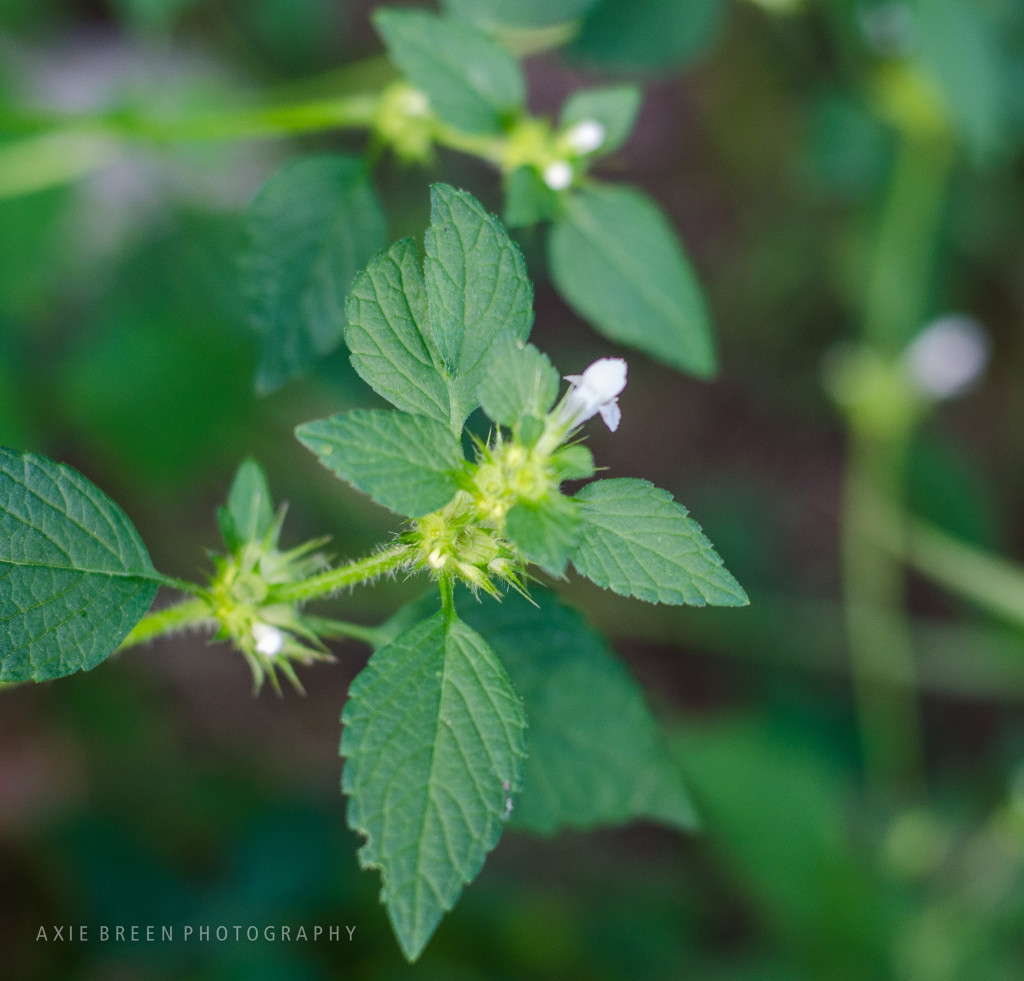 Still discovering wildflowers in my familiar haunts that I haven’t identified. This one has tiny, snapdragon-like blossoms. The most distinctive thing is the dense spiky whorls of blossoms growing in the axils– between the leaves, all up and down the stem. This is an annual, dependent on seed production to flourish, native to Europe and Asia. In the Mint family.
Still discovering wildflowers in my familiar haunts that I haven’t identified. This one has tiny, snapdragon-like blossoms. The most distinctive thing is the dense spiky whorls of blossoms growing in the axils– between the leaves, all up and down the stem. This is an annual, dependent on seed production to flourish, native to Europe and Asia. In the Mint family.
Hemp Nettle (Galeopsis tetrahit)
Bonus picture: There is a gentleman in our neighborhood who has transformed his suburban property into a delightful farm, with fruit trees and bees and all kinds of berries and vegetables. We stopped and bought some peaches off his front porch, and he gave us a short tour, including these elderberries. Describing how he cooked with the white flowers, and all the delicious things you could make with the berries. He has a passion for his plants.
I wondered how this heron nest could possibly weather the severe winter we had, but I was glad to see it still there and occupied this spring. I believe these are the young ones, looking a bit like bowling pins til they turned their heads…
Herons lay 2-6 eggs in a clutch, in March and April. The eggs incubate about a month. Then they fledge when they’re about two months old. They still come back to visit for a few weeks.
Heard the peepers first on the night of April 10, coming from the Charles River, only a week later than last year, even though spring feels so late this year. Then today went for a good listen. It was silent at a pond that still had snow on it, but frog party-town at the adjacent one that gets more sun… It’s peepers and wood frogs — wood frogs are the ones that make a clacking sound. So good to hear some spring!
We were driving around looking for a different access route to the marsh with the heron nest. We were on a residential street in Wellesley when we spotted this coyote. It immediately turned to leave, but when Lucy started barking at it from inside the car, it came back to investigate us.
It looked quite fine and healthy as far as I could tell. Rather thrilling to get such a good look. Coyotes weigh 20 to 50 lbs. and can live up to 14 years in the wild. Their litters are three to twelve pups, born in the spring. Both parents protect their pups and their territory. By fall, the young can hunt on their own. There is an area of Ridge Hill I call Coyoteville. I wonder if this one has a den in that area.
This 4th of July morning was gray with the clouds of an impending storm. We went to check out a heron nest I saw a couple of weeks ago. And it was so great to look over there and see all these great tall birds perched in their aerie! At first they were bunched together so it was hard to see how many there were. 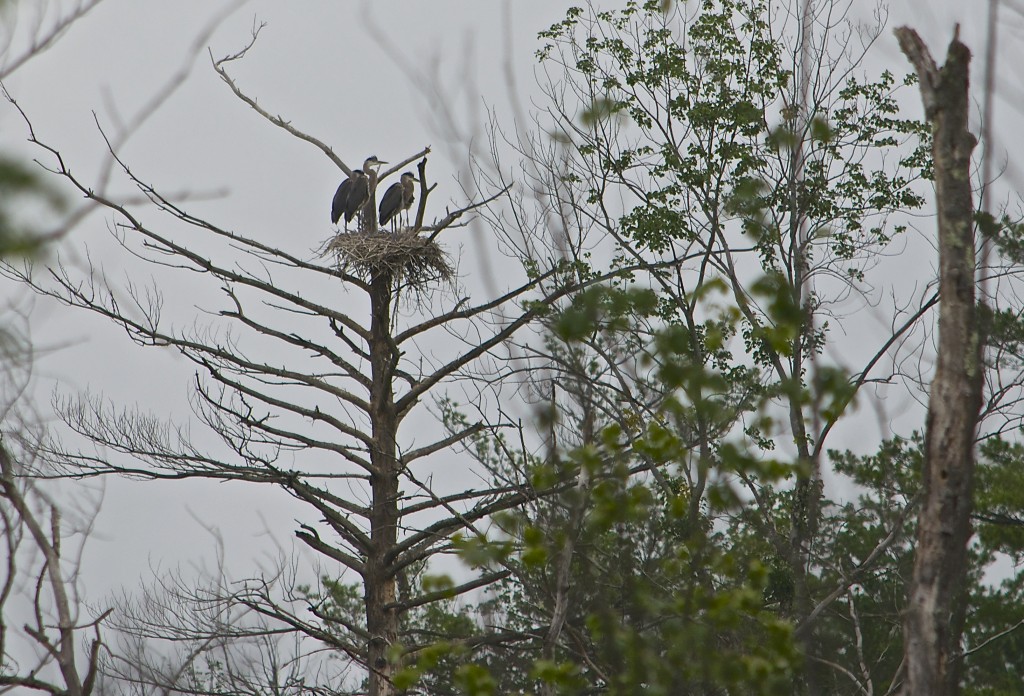
But then they wandered around a bit, revealing four.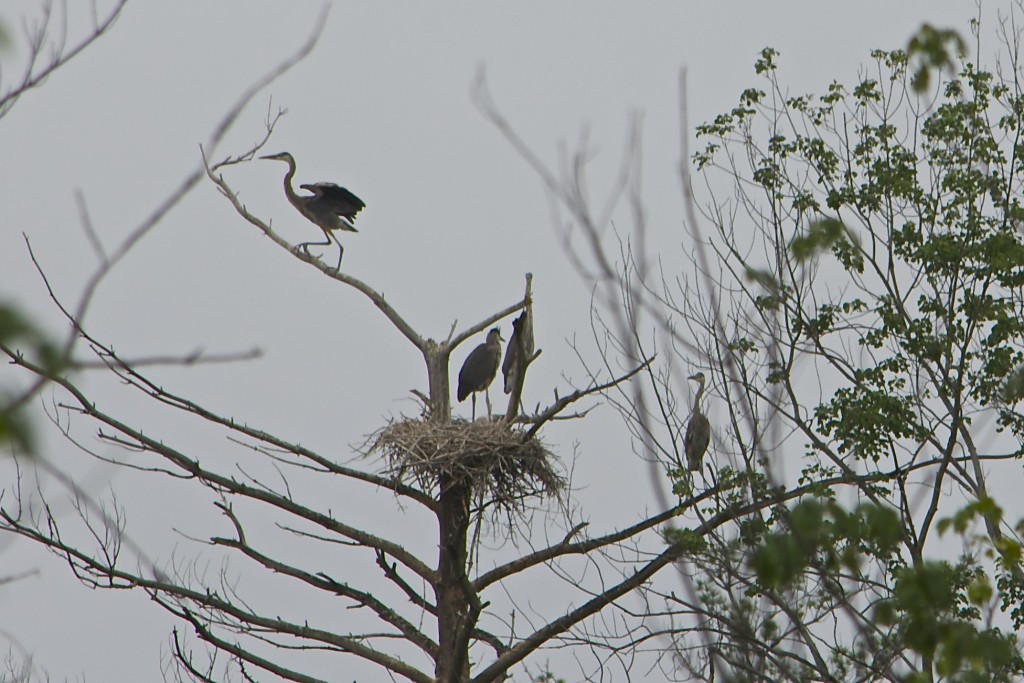
I hope they come through this storm okay (remnants of Hurricane Arthur). Glad there is enough habitat here to support them. Imagine building that nest (with your mouth) — how do you get the first sticks to stay? Clever birds!
Great Blue Herons will eat just about anything they can catch, including fish, insects, mammals, amphibians, reptiles and even birds. They can hunt during the day and night, because of good night vision. We’ve noticed new beaver dams in our favorite hiking areas, and this is a boon for herons because hunting is good in the swamps created by the dams.
From allaboutbirds.org:
Male Great Blue Herons collect much of the nest material, gathering sticks from the ground and nearby shrubs and trees, and from unguarded and abandoned nests, and presenting them to the female. She weaves a platform and a saucer-shaped nest cup, lining it with pine needles, moss, reeds, dry grass, mangrove leaves, or small twigs. Nest building can take from 3 days up to 2 weeks; the finished nest can range from a simple platform measuring 20 inches across to more elaborate structures used over multiple years, reaching 4 feet across and nearly 3.5 feet deep. Ground-nesting herons use vegetation such as salt grass to form the nest.
Great Blue Herons nest mainly in trees, but will also nest on the ground, on bushes, in mangroves, and on structures such as duck blinds, channel markers, or artificial nest platforms. Males arrive at the colony and settle on nest sites; from there, they court passing females. Colonies can consist of 500 or more individual nests, with multiple nests per tree built 100 or more feet off the ground.
— A clutch will have 2-6 eggs, which are about 2.5 to 3 inches long. They incubate for about a month, and the young stay in the nest 4 to 7 weeks. These ones must be about ready to strike out on their own. Pairs choose new breeding partners each year.